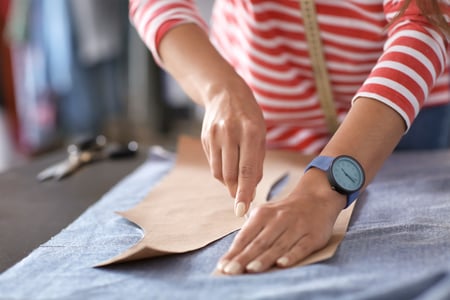The Impact of Printers in Women's Football
16 August 2023

In the ever-evolving landscape of women's football, the role of printers might not be immediately apparent (or apparent at all!), but their significance is deeply woven into the fabric of the game's growth and success. As the 2023 Women's World Cup unfolds with unprecedented fervor, the intricate ways printers contribute to this historical moment become more evident. Today, the spotlight rests on the semi-final clash between England and Australia, igniting excitement and anticipation for a match that promises to etch its mark on the sport's history.
So, what is the true impact of printers in women's football?
Amid the tension and exhilaration of this World Cup campaign, a quiet yet pivotal ally stands tall: the humble printer. Beyond the pristine pitches and dazzling goals, a myriad of administrative tasks are essential to ensure the seamless operation of women's football teams. Think schedules, training plans, and team rosters – all meticulously printed and distributed to coaches, players, and staff. As the Lionesses take the field against Australia, those carefully printed documents serve as the backbone of efficient coordination and preparation.
Beyond the nuts and bolts, printers play a crucial role in shaping the narrative of women's football. Think about scouting reports – those tactical blueprints that map out an opponent's strengths and weaknesses. In physical form, these reports become touchstones for coaches and players, facilitating strategic discussions that could tip the balance of a crucial match. The power of ink on paper extends to match analysis, as coaches and analysts pore over printed statistics and performance reports to derive insights that inform future strategies.
Moreover, the influence of printers isn't limited to the training ground and match day. Behind the scenes, player contracts, medical forms, and waivers demand physical manifestation. Sponsors' agreements and promotional materials spring to life on paper, forming a tangible bridge between the team and its supporters. Merchandise bearing team logos, scarves, and jerseys become emblems of fandom, tangible expressions of allegiance that echo in the stands.
Printers also weave their magic in education and outreach efforts. As women's football strives to expand its reach, printers churn out materials for community engagement programmes, youth clinics, and educational initiatives. The printed word becomes a tool for empowerment, introducing young girls to the possibilities that the sport holds and fostering connections that endure beyond the final whistle.
In a world defined by digital communication, why do printers still hold sway in the realm of women's football? Their tangible nature brings a sense of authenticity to the sport's journey. Printed match tickets, access passes, and event schedules contribute to the palpable excitement of game day. Fans clutch these printed tokens as they converge on stadiums, evoking a sense of belonging that transcends the digital realm.
As the Lionesses and Matildas clash in the semi-finals, the enormity of this Women's World Cup is undeniable. This tournament, hailed as the most successful in history, has shattered records and captured the imagination of a global audience. In the U.K. alone, millions of viewers have tuned in, marking a watershed moment for the visibility and recognition of women's football.
In a candid conversation with Sarah Rendell, a Guardian football writer closely following this historic event, the profound impact of the World Cup emerges. The unexpected turns, from Germany's unexpected exit to Ireland's corner-kick goal, encapsulate the emotional rollercoaster that this tournament has been. Moments like these resonate deeply, propelling women's football to new heights and silencing detractors who underestimate the sport's prowess.
However, the impact of this World Cup extends beyond the pitch. The resounding engagement from fans, fueled by memes and viral clips, underscores the growing connection between players and supporters. Moments like the handshake between US goalkeeper Alyssa Naeher and Zecira Musovic epitomise the personality of women's footballers, transcending the game to resonate with a broader audience and may one day, make their way onto a poster, as an homage to women's unity.
As the tournament nears its climax, its legacy becomes the focus of reflection. The transformative effect on women's football is undeniable. From inspiring young girls in countries like Colombia, Nigeria, and Jamaica to showcasing the potential of underfunded teams, this World Cup has breathed life into a movement that's gaining momentum.
In the midst of the England-Australia showdown, the role of printers might seem inconspicuous, yet their impact is undeniable. They bridge the gap between the digital and tangible realms, transforming administrative tasks into pieces of the sport's history. As the Lionesses take to the field, supported by the intricate workings of printers, they epitomise the remarkable journey of women's football, a journey that is forever inked on the pages of this World Cup's legacy.



